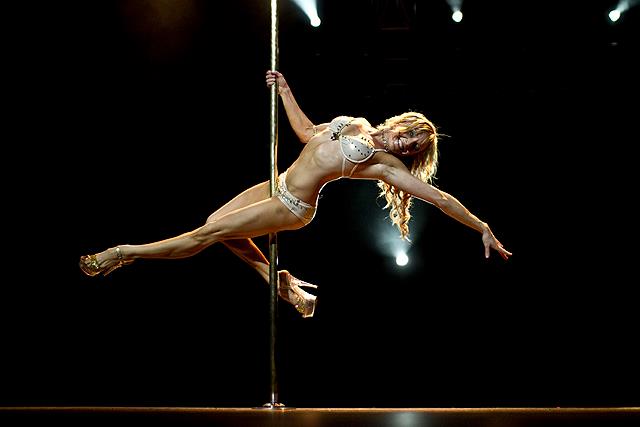
Porsche is winner of Miss Pole Dance Australia 2013. She is in conversation with Namita Nayyar President Women Fitness
Ms. Namita Nayyar:
You studied classical ballet at the age of five and with that background you reached the pinnacle of success in pole dancing where you stood 1st at Miss Pole Dance Australia 2013. What factors you consider were responsible that made you achieve that?
Ms. Porsche:
Ballet is a very strict artistic discipline. It demands respect for the technical and artistic skill requirements of the art and requires a striving for perfection through meticulous repetition and attention to detail. It also requires perseverance, mental focus and a determination to succeed. Artists thrive on constructive criticism and constantly reassess what is needed to refine their performance. Knowing that there is always room for improvement drives me to be better than my best in my fitness and artistic pursuits.
Ms. Namita Nayyar:
You studied ballet and contemporary dance at the University of Cape Town, South Africa and at Rambert School of Dance, London, at Cape Town City Ballet you danced as a soloist. At Sydney, Australia you focused your interest to Pilates and teaching ballet. You gained knowledge in the areas of anatomy of movement, injury rehabilitation and corrective exercise therapy. With this knowledge and experience you innovated your own mesmerizing style of pole dancing. Elaborate on this concept ?
Ms. Porsche:
There are many influences that have contributed to the pole dance performer and instructor that I am today. I saw my first professional ballet production at the age of fourteen. It was a production of ‘Cinderella’ and I immediately knew that one day I was going to be a professional dancer. The storytelling through dance was absolutely magical – the dancing, acting, sets, lights, costumes, makeup, hair and live orchestra. I devoured whatever ballet books I could get my hands on and watched my ballet videos over and over. As I grew a little older I was captivated by the strong technique and athletic style of the American ballet dancers, in particular those of the New York City Ballet under the directorship of George Balanchine. I loved the dancers’ clean technique, seemingly effortless agility as well as perfectly placed lines and extensions. This has remained the driving force behind my dance style.
One of my ballet teachers once said to me that there is a direct correlation between injuries and poor dance technique. She said that if you have good dance technique there is no reason why one should get injured. I took it on board and for this very reason, throughout my career I diligently worked towards understanding and exercising better dance technique not only for aesthetic reasons but also for the longevity of my career. Whenever I had niggles, this guided me to investigate, what the causes were and what I needed to do to overcome and prevent it in future. This ignited my interest in expanding my knowledge about dance technique and the biomechanics of the body as it relates to movement.

Ms. Namita Nayyar:
Your first win in competitive pole dancing came in 2009 when you were 3rd Runner-up at Miss Pole Dance Australia. What was that experience and how it fueled you with passion to succeed in pole dancing?
Ms. Porsche:
The first time I placed in the state finals of Miss Pole Dance Australia was the first year I competed in the competition. At this stage it had been several years since I last danced professionally. Returning to the stage in the NSW heats was an absolutely nerve wrecking experience and although I qualified for the state finals I could hardly remember my performance. I was that nervous. I had no expectation of placing. I simply wanted to showcase my routine with the knowledge that I did as best as I could and to conquer my nervous energy of the time before. I was ecstatic when I placed third runner up.
That year was also was the second time that Felix Cane, twice world pole dance champion, won. I clearly remember standing backstage trying to get a sneak peak of her performance. The audience were bursting with exhilaration. With the movement range of a contortionist backed up by a strong dance background and her unique sensual style, Felix performed her routine comprising of her unthinkable and never seen before signature pole moves.
Prior to Felix’s arrival on the pole dancing scene, it still had a stigma attached to it being associated with strip clubs. Felix changed the world of pole dancing forever, putting it on the map as a recognised competitive sport and art form requiring great feats of strength, flexibility, skill and finesse. She set a new standard well above what we at first thought was possible and I think this was what catapulted the progress of many aspiring pole dancers, including myself.
Video
Disclaimer
The Content is not intended to be a substitute for professional medical advice, diagnosis, or treatment. Always seek the advice of your physician or other qualified health provider with any questions you may have regarding a medical condition.